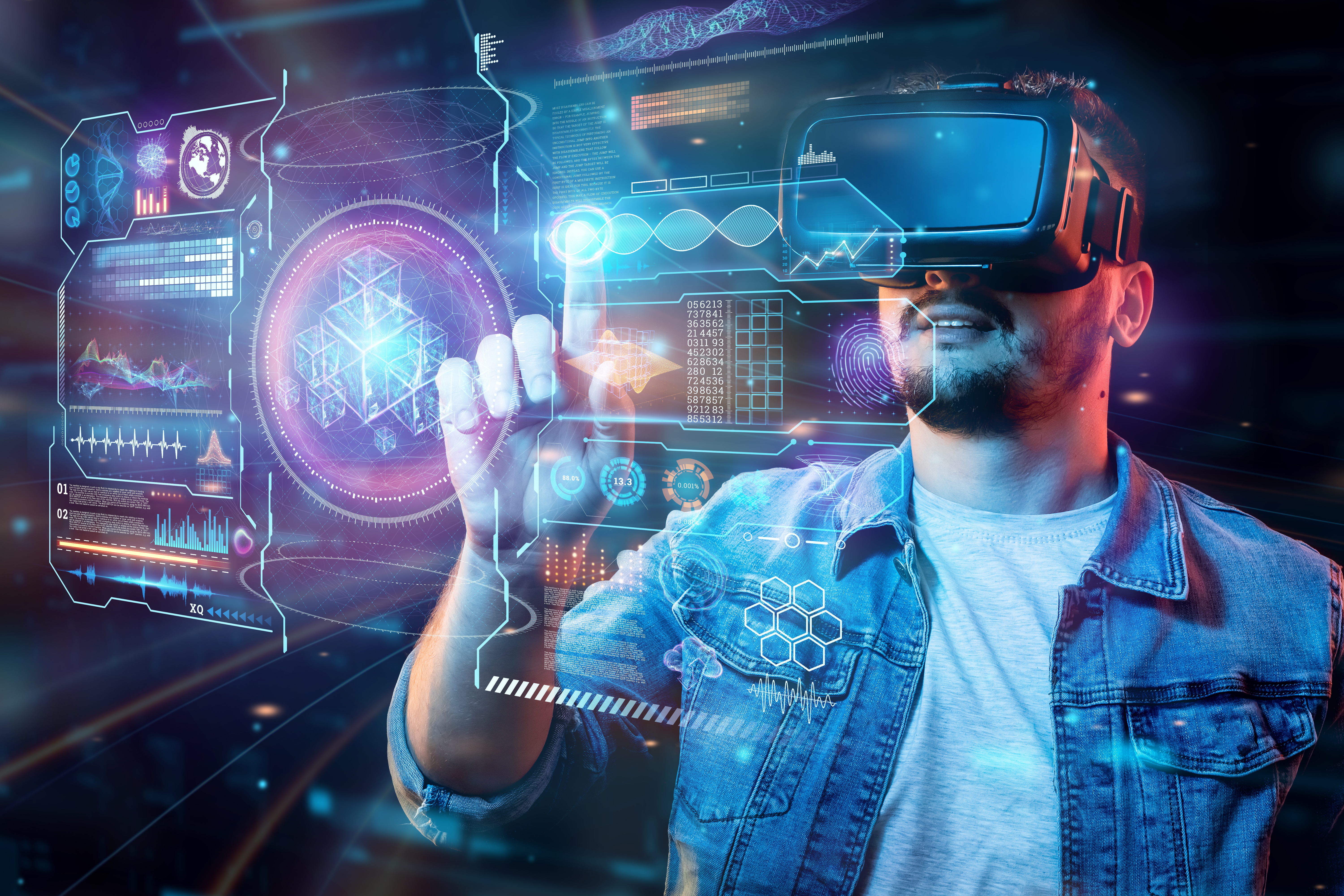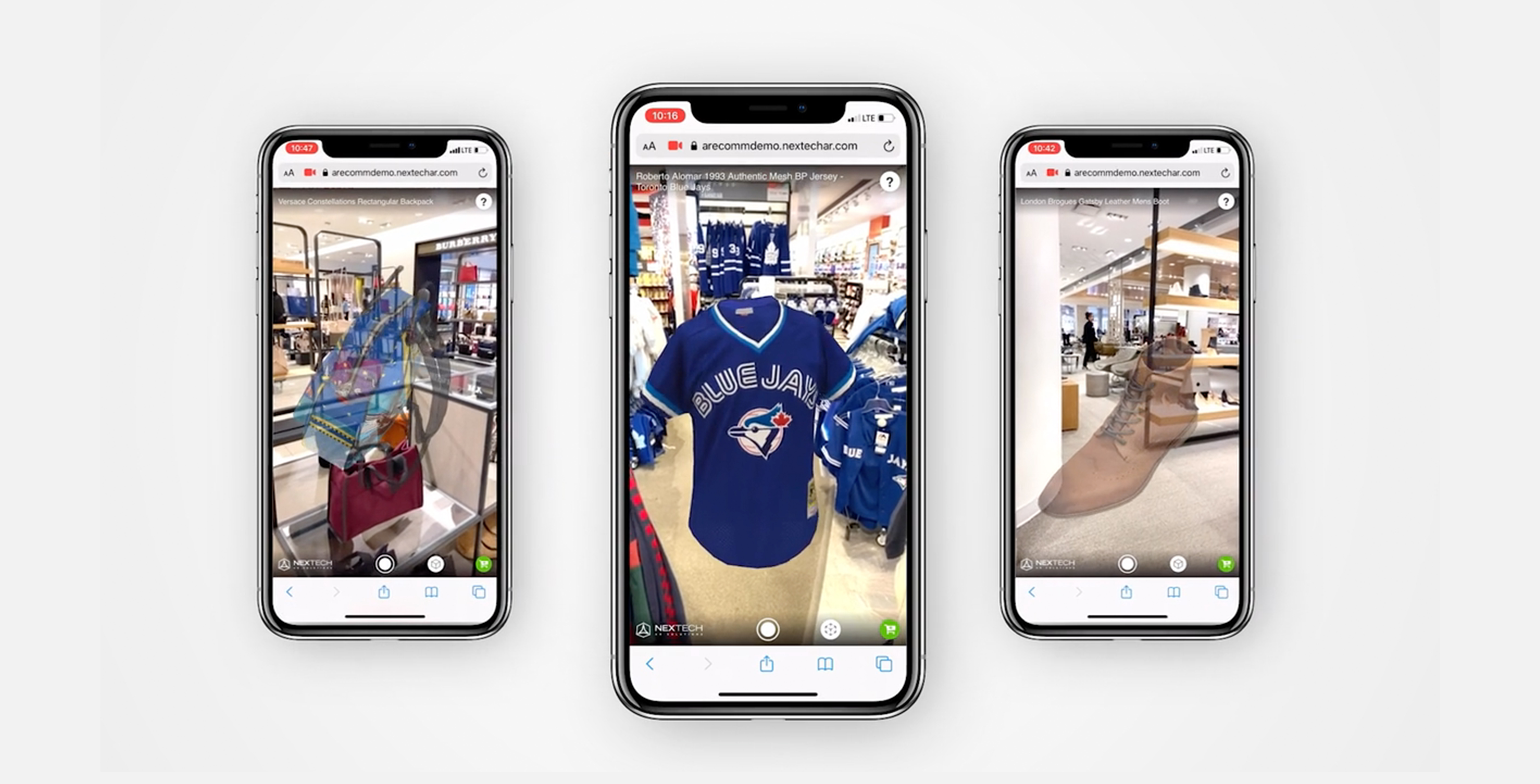As immersive technologies such as Augmented Reality (AR) and Virtual Reality (VR) continue to blur the lines between the digital world and reality, it's easy to confuse the two - they even sound similar.
Both are expected to grow tremendously in the next few years. Both keep making the headlines thanks to AR games and apps such as Pokemon Go or Harry Potter: Wizards Unite and VR headsets like Oculus Quest.
However, although Augmented Reality and Virtual Reality are very much alike in terms of altering the world as we see it, they are fundamentally two distinct technologies. What exactly is the difference between AR and VR? Let's take a closer look at what sets them apart.
What is Virtual Reality?
Virtual reality is an artificial environment which is experienced through sensory stimuli (such as sights and sounds) provided by a computer and in which one's actions partially determine what happens in the environment. Source: Merriam-Webster
How Does Virtual Reality Work?
Using a head-mounted display (HMD) or VR headset, users are completely immersed in a simulated environment which, together with interactive features such as surround sound and lifelike visualization makes them feel as if they're someplace else. The headset is designed to completely block out user's vision in order to be replaced with digitally-created content which could be literally anything: an inside of their favourite computer game or the bottom of the ocean.
Usually, the headset is tethered with a PC or a console that enables the computer-generated reality although some headsets are powered via smartphones (such as Samsung Gear VR).
The Earliest Applications of Virtual Reality
Considering how far the technology has come in the past five years, you might be surprised to learn that one of the very first Virtual Reality systems dates all the way back to 1962 when the Sensorama Simulator was invented by cinematographer Morton Heilig. 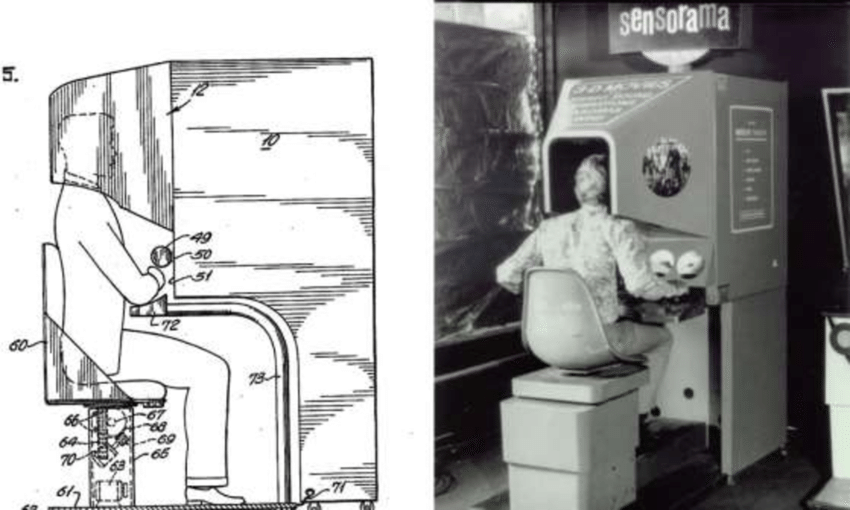
Image source:ResearchGate
Sensorama was a large booth equipped with sensory stimulants such as scent, vibration, audio and 3D video to completely immerse viewers in the experience. Six movies were shot for the sole purpose of Sensorame, all produced and edited by Heilig himself.
Six years later, in 1968 a computer scientist Ivan Sutherland together with his student Bob Sproull demonstrated the first virtual reality head-mounted display called The Sword of Damocles. 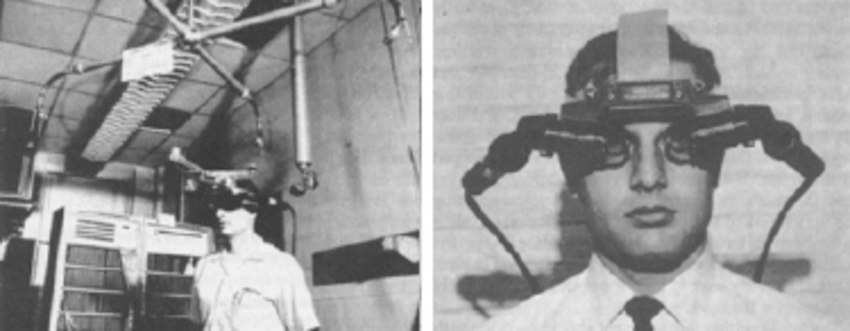
Image source: ResearchGate
Sutherland's HMD was connected to the computer and it was so heavy, it had to be anchored to the ceiling to avoid crushing the person using it.
In 1977, a group of MIT students created Aspen Movie Map, the very early version on Google Street View which allowed users to walk through the streets of Aspen, Colorado.
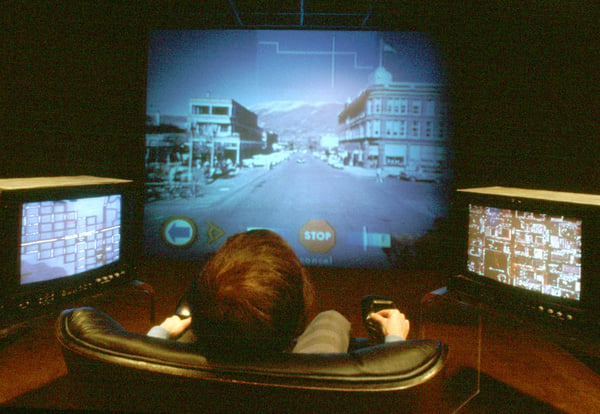
Image Source: Michael Naimark
Current uses and future opportunities of Virtual Reality
Healthcare
Virtual reality in healthcare not only has proved immensely valuable for healthcare professionals by enhancing medical training but it has also given patients the opportunity to better understand their treatment as a result of 3D surgical planning:
It's also worth mentioning that VR is starting to make a real impact on psychological therapy as therapists are now able to recreate scenarios in which mental health issues such as PTSD, phobias or anxiety disorders occur without having to leave the room.
Entertainment
From three-dimensional gaming to one-to-one history lessons with Sir David Attenborough, there's hardly entertainment activity that cannot be replicated in a digital environment. Furthermore, VR enables users to interact with 3D objects via data glove in a way that would be impossible in the real world (for example, lifting an artefact in a museum or art gallery to view it from every angle).
News & Journalism
In the news and journalism industry, Virtual Reality will allow viewers to immerse themselves into each story instead of simply reading about it or watching a standard video. Although VR journalism is still predominantly a concept, journalist Nonny de la Peña (or “The Godmother of Virtual Reality” as many refer to her) has dedicated her life and career to storytelling through a VR headset.
Sports
It's not always possible to attend a football or a baseball game in-person; in fact, it's safer NOT to amid coronavirus pandemic. Luckily, with virtual reality goggles, you can stream sporting events and fully immerse yourself in the experience while sitting on your couch.
Virtual reality is also revolutionizing sports training for athletes and coaches by training in real-life as well as being able to "re-practice" digitally designed scenarios they would face on the field in real life.
What is Augmented Reality?
Augmented reality is an interactive experience that presents you with a real environment that has been enhanced or altered by computer-generated information. Using a smartphone camera or a similar piece of technology, it allows you to experience the real world with additional data or images overlaid on top of it in the form of three-dimensional holograms, interactive models, or text.
What is Augmented Reality? How Does Augmented Reality Work?
Whereas VR completely replaces the real world with computer-generated reality, Augmented Reality overlays digital information, such as text or images over physical surroundings through the camera lens of your smartphone or a tablet. In other words, it projects virtual elements over real objects to enhance reality.
Unlike Virtual Reality, Augmented Reality does not require a headset to work (although AR glasses such as Microsoft Hololens augment the experience even further!) which makes the technology much more accessible for users.
The Earliest Applications of Augmented Reality
The first concept of Augmented Reality, The Videoplace, was introduced in 1974 by a computer researcher and artist, Myron Krueger. Users were placed in a digital environment using a projection system, video cameras and on-screen silhouettes.
Even though computer-generated reality had been experimented with for roughly twenty years at that point, it wasn't until 1990 when the term "Augmented Reality" was coined by Boeing researcher Tom Caudell.
Only two years later, in 1992, the first properly operating Augmented Reality system was created at USAF Armstrong’s Research Lab by researcher Louis Rosenberg. 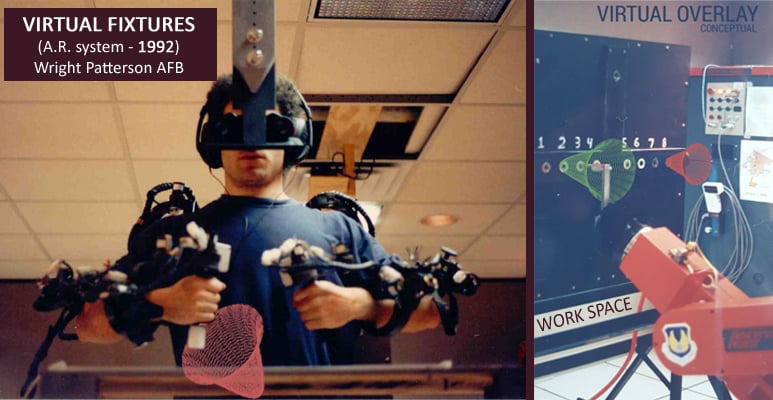
Image source: Wikimedia Commons
The project, called Virtual Fixtures, overlayed additional information over the military personnel's work environment to boost efficiency and productivity.
Current and Future Opportunities of Augmented Reality
Marketing and Advertising
Due to its immersive nature, Augmented Reality in marketing and advertising creates a far deeper emotional connection than any other medium. Customers can actually interact with 3D Hologram Ads, which cannot be said about static images or banners.
Make no mistake though. Although AR experiences are fun to engage with, it's also an effective promotional method because of the way Augmented Reality affects the brain - heightening visual attention and evoking 'surprise' reaction to AR experiences which causes the interaction to be stored in the long-term memory. Meaning, we remember that interaction and information included in it for longer.
Ecommerce
AR in ecommerce brings the shopping experience to your customers. Many consumers still prefer shopping in physical stores so that they can view the product in real-time, from every angle. Augmented Reality ecommerce solutions remove that barrier from the buyer's journey by creating 3D/AR versions of products which allow customers to do the same thing on their smartphones.
Training
There's no shortage of AR uses in the training industry. Medical training. Corporate training. Repair & maintenance. Field service. Instead of passively learning new skills in a traditional classroom model, employees are immersed in a pre-designed simulated environment that allows them to engage with their surroundings as they learn. Not only that, the health and safety concerns are reduced to a minimum as people are able to rehearse the newly gained information and skills virtually first rather than in the real world.
Events & Conferences
Imagine organizing a trade show where attendees can visit various booths from the comfort of their own homes. Well, you don't actually have to imagine it - all events have gone virtual in 2020 due to coronavirus pandemic so you've most probably done it yourself already.
Augmented Reality events take virtual event experience to a whole new level with interactive features and 3D product demonstrations that increase user experience and successfully combat the "Zoom fatigue".
Augmented Reality vs Virtual Reality: What is the Difference?
It's no surprise people confuse VR with AR - they are very similar. However, as you can see for yourself, Virtual Reality works by replacing the real-world environment completely while Augmented Reality simply adds virtual elements to it. Additionally, since AR doesn't require users to wear a headset, it is much more accessible to people all around the world - all they need to enjoy the experience is a smartphone or a tablet.
There's no way of telling which of the two immersive technologies is superior as both of them have gathered millions of fans over the years. One thing for sure, exciting times lie ahead.
Want to learn more about how our Augmented Reality Solutions can help grow your business? Contact us today for a free demo.


